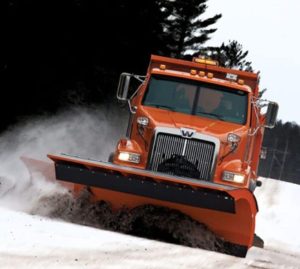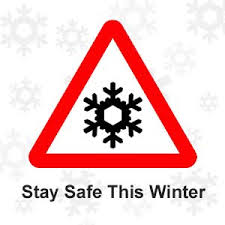Winter Weather Operation Checklist for Construction Equipment Safety
Winter’s worst weather just keeps coming this year. While you’re probably wishing for spring right now, you still have to safely navigate construction sites in this winter weather. Construction equipment safety is always top-of-mind for operators and project managers, but now you need to be more vigilant than ever.
Here are some reminders about how to keep yourself and your equipment safe.
 Clean or replace fuel, air and hydraulic filters as frequently as needed to prevent power loss.
Clean or replace fuel, air and hydraulic filters as frequently as needed to prevent power loss.- Do not attempt to charge your battery if it’s frozen, because it will explode. Even if your battery isn’t frozen, using jumper cables in cold weather requires extra caution. Talk with the person helping you about how you’ll proceed before you start, because the person in the cab won’t be able to hear once the engine starts up.
- Be extra careful how you store and handle highly volatile ether starting aids, because cold affects pressurized cans. If you use ether products improperly, your engine may seize while cranking, causing valve stems to bend or other damage.
- Remember that equipment sitting for a prolonged period can freeze to the ground, whether it’s equipped with rubber tires or tracks. That can severely damage tires or the drive train when you try to move the machine. Instead, park working equipment on raised planks or old tires. It’s also a good idea to rest buckets, blades and similar components off the ground to prevent stress or damage during start-up.
- If you haven’t used this machine yet this winter, double check to be sure the heat-and-defrost system is working well.
- Warm up your equipment slowly, giving hoses and wires plenty of time to come up to operating temperature. You can speed warming of your hydraulics, by holding a control valve after the cylinder reaches the end of its stroke – that allows the relief valve to open intermittently.
- Once you’re ready to go to work, remember that traction deteriorates when ground is icy or frozen, increasing risk of accidents or even a roll-over. Work slowly enough to retain control and reduce impact shock on cutting edges under tough digging conditions.
- Be on the lookout for snow-covered objects that could damage your tires, tracks or undercarriage and for hidden iced-over water that may not hold your machine’s weight. If you can, remove the snow before you start to work. And if you’re moving frozen material that will be used as fill, remember that it’s likely to have a higher-than-normal moisture content. When it thaws, you’ll might have mud that could create sinkholes.
- Wear insulated gloves when checking components and entering or exiting your machine, to avoid touching frozen metal surfaces. And be extra careful using steps, grip plates and grab holds that could be slippers.
 If you’re driving a tow or transport truck on roadways with other drivers:
If you’re driving a tow or transport truck on roadways with other drivers:
- Pay extra attention to your pre-trip inspection – don’t forget to top off windshield washer fluid.
- Keep your headlights and tail lights clean, and turn on your low beams to increase visibility.
- Carry an emergency kit in your vehicle.
- Slow down and increase your following distance, especially behind snow plows.
- Slow down even more on ramps and bridges, because they freeze first.
Wherever you are on the job, always be thinking about how winter weather is affecting your construction equipment safety. If something seems unsafe, report it, so the situation can be corrected before machinery gets damaged or someone gets injured or even killed.
